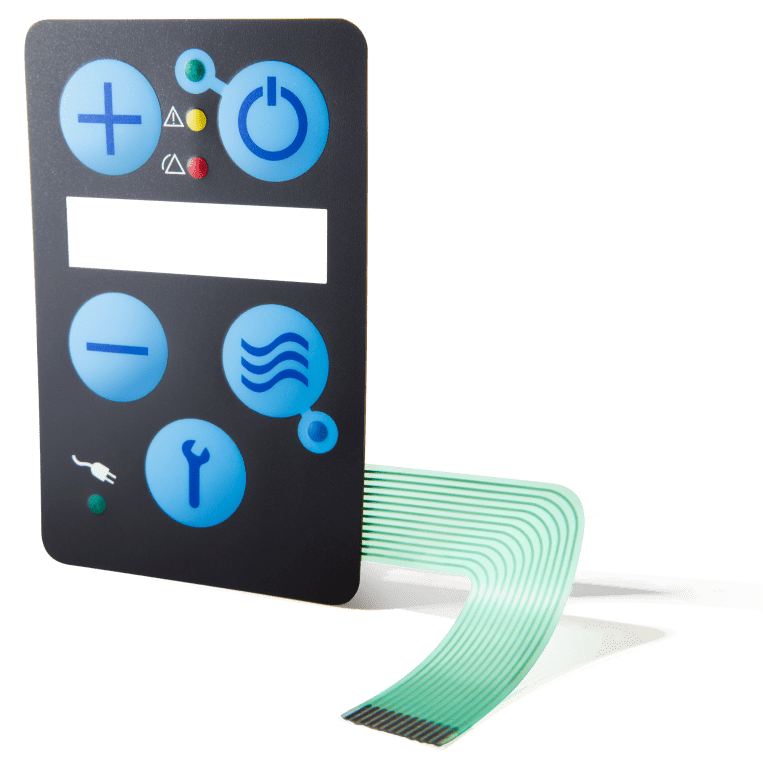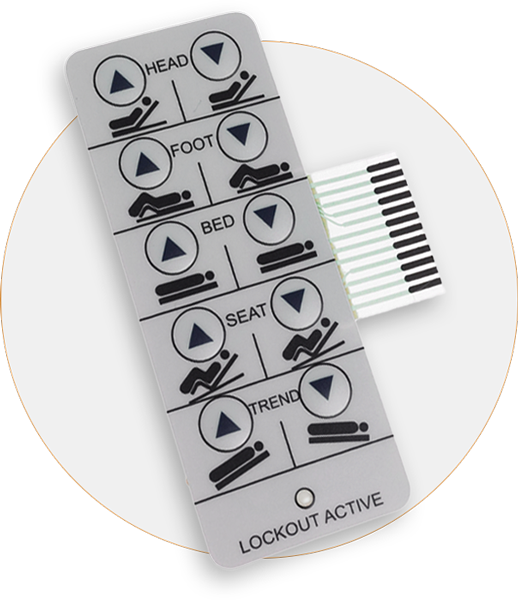Membrane Layer Switch Over Innovation: The Trick to Reliable and Economical User Interfaces
Membrane layer switch innovation has actually become a pivotal element in the design of individual interfaces, supplying both integrity and cost-effectiveness throughout a diverse variety of applications. Its robust building makes certain resistance to ecological challenges, while the flexibility in style permits for customized remedies that meet specific industry needs. As we check out the diverse advantages of membrane buttons, their capacity for technology increases concerns regarding future applications and progressing patterns. What does the following phase hold for this technology in an increasingly digital landscape?
Recognizing Membrane Layer Change Technology
Membrane button innovation is a commonly utilized interface remedy in numerous electronic devices, offering a smooth blend of functionality and layout. This technology includes several layers of materials, usually containing a graphic overlay, spacer layer, and a circuit layer. The graphic overlay shows the user interface components, while the spacer layer divides the circuit layer from the overlay up until an individual activates a button.
When stress is applied to the overlay, the circuit layer finishes the electric circuit, sending a signal to the tool. This device permits for different arrangements, including responsive comments and backlighting options, improving customer interaction. Membrane switches are normally produced making use of durable materials such as polyester or polycarbonate, ensuring long life and resistance to environmental variables like moisture and dust.
The versatility of membrane layer switches allows their application in varied markets, consisting of clinical gadgets, consumer electronic devices, and industrial controls. Their small layout enables assimilation into space-constrained settings, providing an efficient interface without compromising visual appeal. Comprehending the ins and outs of membrane button technology is essential for manufacturers and designers looking for to produce dependable and efficient human-machine user interfaces.
Key Advantages of Membrane Layer Buttons
While various interface remedies exist, membrane changes deal distinctive advantages that make them a preferred option in countless applications. Among the key advantages is their longevity; membrane switches are developed to hold up against harsh ecological problems, consisting of dampness, dirt, and temperature fluctuations, guaranteeing resilient efficiency. This strength significantly decreases the requirement for regular replacements, consequently decreasing total maintenance prices.
Furthermore, membrane layer buttons are light-weight and portable, making them ideal for applications where room is restricted. Their inconspicuous style adds to a sleek look without endangering performance.
Cost-effectiveness is likewise a significant advantage, as the production procedure for membrane switches often tends to be more economical contrasted to typical mechanical switches. This price, incorporated with their dependability and convenience of installment, settings membrane layer changes as a useful solution for a wide variety of industries looking for efficient and reliable customer interfaces.
Applications Across Numerous Industries
Just how do membrane layer switches adapt to the varied requirements of numerous sectors? Membrane switch modern technology is increasingly acknowledged for its adaptability, making it suitable for a broad array of the original source applications throughout multiple industries.
In consumer electronic devices, membrane buttons offer a small remedy for remote controls and home appliances, improving customer experience via user-friendly style. In addition, the commercial sector leverages membrane switches for equipment control board, taking advantage of their resistance to severe atmospheres, such as wetness and dirt.
Army and aerospace applications additionally utilize membrane switches for their dependability and capacity to hold up against severe problems, ensuring functional performance in crucial circumstances. In addition, the food and drink sector takes on these buttons for automated systems, where hygiene and convenience of procedure are vital. Ultimately, membrane switches are tailored to fulfill the one-of-a-kind needs of each sector, verifying their necessary function in Related Site contemporary technology interfaces
Design and Customization Alternatives

In the world of membrane button modern technology, design and customization options play a pivotal duty in boosting performance and user communication. These buttons can be customized to satisfy specific functional demands and aesthetic choices, making them versatile parts in various applications.
One of the key personalization options is the format of the switch itself, which can be made to fit unique user interfaces and ergonomic considerations. By readjusting the shape, dimension, and arrangement of switches, manufacturers can produce intuitive layouts that assist in ease of usage. Additionally, the unification of different shades and visuals overlays enables for branding and enhanced visibility, making certain that users can promptly identify features.
Moreover, membrane buttons can be crafted with different responsive comments mechanisms, such as raised switches or audible clicks, to improve the user experience. Various materials can likewise be selected for toughness and environmental resistance, attending to aspects such as moisture, temperature variations, and chemical exposure.
Eventually, the considerable layout and customization options offered in membrane switch innovation empower businesses to produce customized remedies that not only fulfill practical demands yet additionally align with their branding and functional requirements.

Future Patterns in Membrane Layer Switches
As membrane switch modern technology proceeds to develop, future trends are progressively concentrated on enhancing user experience and integrating sophisticated capabilities. One substantial trend is the integration of touch-sensitive and capacitive innovations right into typical membrane switches. This development enables for more user-friendly interface, giving responsive feedback while maintaining a sleek design.
Another emerging trend is making use of eco-friendly materials, driven by the growing need for lasting manufacturing methods. Makers are looking for to decrease their carbon footprint by using recyclable substrates and low-impact inks, lining up with worldwide sustainability goals.
Furthermore, the increase of the Net of Things (IoT) is triggering the unification of wise functions into membrane switches. Improved connection choices will certainly make it possible for gadgets to interact with each other, allowing for seamless assimilation right into broader systems.
Additionally, developments in printing technologies, such as electronic printing, are permitting higher layout adaptability and modification. This makes it possible for makers to create intricate layouts and vivid shades cost-effectively.

Conclusion
Finally, membrane layer button innovation represents a vital innovation in individual interface design, using considerable advantages in durability, customization, and cost-effectiveness. Its prevalent applicability across diverse sectors highlights its importance in modern-day innovation. As developments continue to arise, particularly in touch-sensitive user interfaces view it and lasting materials, the possibility for membrane switches over to improve user experience and capability remains encouraging. Continued expedition of this innovation will likely yield additionally enhancements and expand its extent in future applications.